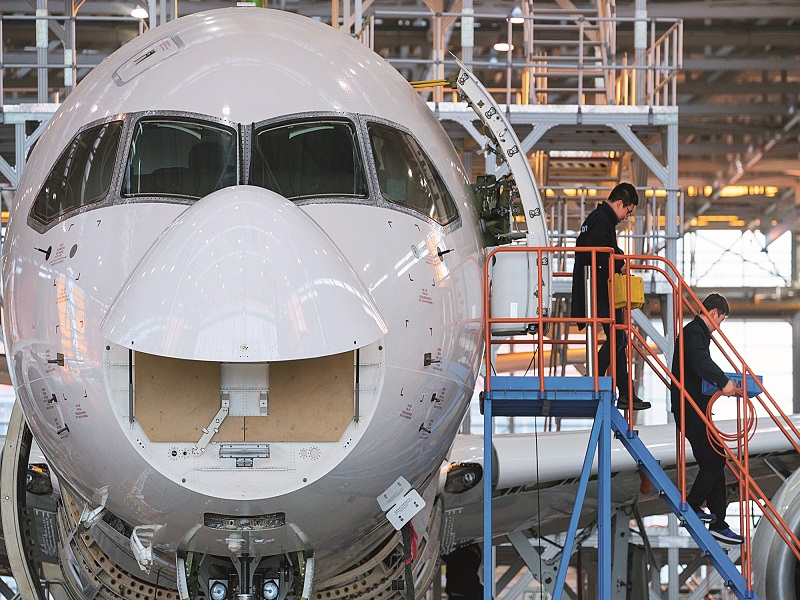C919 Cleared for Takeoff

China’s first domestically produced large passenger plane, the C919, successfully completed its maiden flight in May 2017. It took six years for the plane to be certified since its debut in 2008.
Strong Competitor
The flight makes China the fourth jumbo jet producer after the United States, Europe and Russia. It also marks a milestone for the Commercial Aircraft Corp of China (COMAC), the Shanghai-based manufacturer of the C919.
The twin-engine single-aisle C919 seats 158 or 174 and will be used for medium-haul flights in the commercial market. Commercialization of the C919 will take two to three years, and demand for the C919 in the domestic market is expected to reach at least 2,000.
COMAC has already received 570 orders for the C919 from 23 clients including large domestic carriers such as Air China, China Southern Airlines, China Eastern Airlines, Hainan Airlines and Sichuan Airlines.
Shaking the dominance of giants Boeing and Airbus in the near future is unrealistic, but the Chinese jetliner could become an attractive option for global carriers in decades to come. “I think by 2030 or 2035, COMAC may very well build planes strong enough to compete with Airbus and Boeing,” said Michel Merluzeau, director of Aerospace & Defence Market Analysis for AirInsightResearch in Seattle.

Chief Designer
With the successful maiden flight of the C919, its chief designer, Wu Guanghui, came under the spotlight. “Our country needs us. I just did what I should do,” he said.
Since 2005, Wu shifted the focus of his work from military planes to passenger jet ARJ21, China’s first domestic commercial regional aircraft. In 2012, ARJ21 successfully made its maiden flight, which accumulated a lot of experiences for the design of the C919.
In May 2008, Wu was appointed vice president of the COMAC and Chief Designer of the C919. After communicating with his counterparts from France, Germany and the United States, Wu felt great pressure. Facing the domestic weak base and international block and monopoly of technology, Wu and his team had to feel their way forward.
“We had to design aerodynamic force, from wings, body to the whole plane, from calculating to distribution tests,” recalled Wu. “We had to produce a more advanced type, otherwise we would not have the advantage and competitiveness in the market. We didn’t have any experience alike. We had to decide how to organize and push the whole project forward.”
Wu and his team, after a theoretically argument, began to collect professionals nationwide. Researchers from aviation colleges set up a project team of large-scale passenger jet, brainstorming a master plan for the designing of the plane. And they compared high-end aircraft design plans in today’s world to incorporate their merits. The team highlighted the new plane’s security, economy and amenity as well as its environmentally friendly quality to meet the international standards and even outperform other planes of its kind.
In order to complete their goal, Wu and his team set up a working model: 11 hours a day and seven days a week. And at key phases, they worked in shifts for 24 hours a day. For Wu himself, he always stayed at work without any weekends and holidays. “We can’t allow any errors at any point,” Wu always reminded himself. “We have to move steadfastly.”
Wu gave the credit to his team. “In the design, manufacturing and trail flight, young people have played a key role,” he said. “The average age of our research team is young, and 75 percent of its members are under 35 years old, so I have the reason to believe China’s aviation cause has a brighter future.”